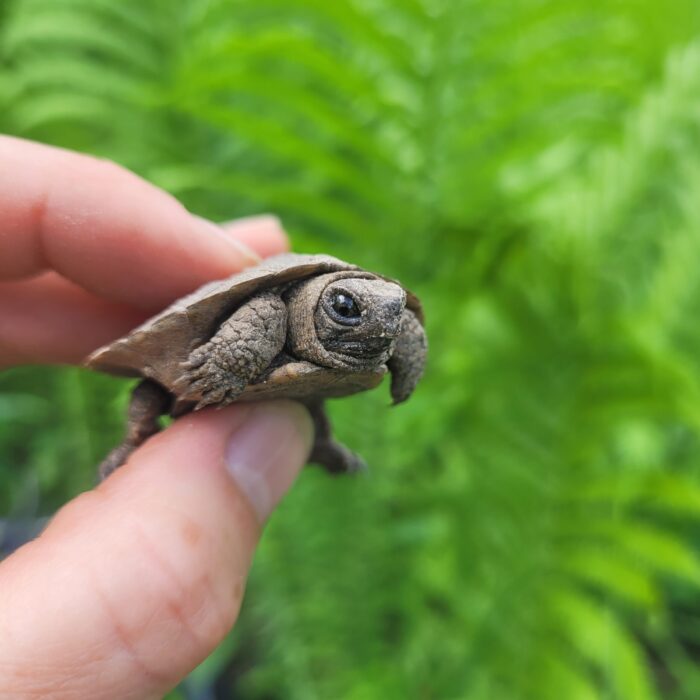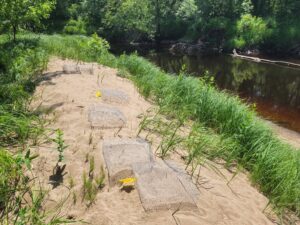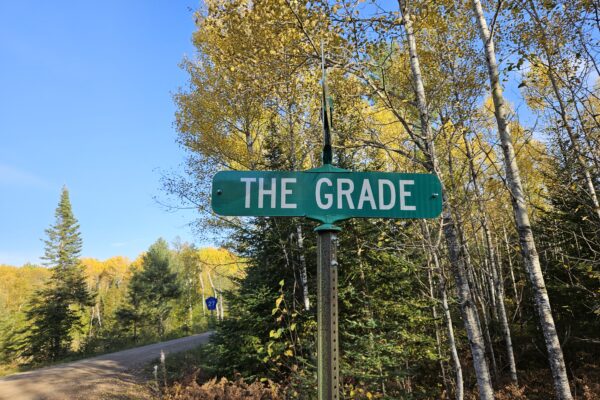DNR discovers new population of wood turtles in Lake County during multi-year research project
For three years, researchers from the Minnesota Department of Natural Resources have been involved in a wood turtle research project in Lake and St. Louis Counties, aiming to identify methods that reduce road mortality and improve nest success.
The wood turtle, known for its distinctive appearance, marked by intricate ridges that resemble little pyramids on top of the shell is a state-threatened species. It has been a focus of the DNR’s efforts to understand better its habitat and how to help boost its populations.
“It’s a species that we’re really concerned about,” said Gaea Crozier, the nongame wildlife specialist with the Minnesota DNR.
Given its threatened status, Crozier said the species is currently being considered for listing under the Federal Endangered Species Act.
Wood turtles are found across Minnesota, particularly in rivers and streams. The wood turtle requires a sandy or gravel substrate for nesting, with nearby forested areas for foraging. Populations of the species are predominantly found in the southern region of the state. However, Crozier noted that monitoring and research efforts haven’t been focused on the northern areas until the launch of this three-year research project.
“We just found a new population in Lake County as part of this project,” said Crozier. “So there are some new populations out there potentially still to be found.”
Crozier said wood turtles have not been documented in Cook County. Research efforts haven’t been focused in Cook County, as sandy river and stream habitats are less abundant in this area compared to other parts of the state.
“They definitely could be in Cook,” she said. “But we haven’t done much exploring there yet.” The DNR encourages anyone to send pictures of wood turtles to help identify new potential populations.
Throughout the three-year research project, the DNR captured and marked 230 unique wood turtles. The wood turtles were marked with a small notch or indentation on their shell to identify unique individuals. When the DNR returns to the area for further research, the notches will allow researchers to identify and track the turtle.
“We have a long-term database going back to the early 90s, when this work was started,” Crozier said. “So we’re able to continue to populate that database with recaptures and learn more about survival rates and age classes in the population.”
The results of the road mortality research show that there are a “very modest number of road killed turtles each year,” Crozier said. There are a couple of roads, considered as “hotspots”, where two to three turtles are killed by being hit or run over by a vehicle throughout Lake and St. Louis County.
While the number may seem small, Crozier said, two to three wood turtles can have a significant impact on a population. “The turtles that are dying are typically breeding females, and so those individuals are really important for sustaining the population.”
Another aspect of the wood turtle research was examining ways to improve nest success. DNR researchers used multiple methods to deter predators from accessing wood turtle nests.
“We found that in northeastern Minnesota, badgers were one of the main nest predators,” Crozier said.
The researchers utilized electric fences and nest boxes to protect the wood turtle nests. Crozier said the electric fences, which lightly shocked a predator, were the most effective method.
In addition to predation, flooding and the encroachment of invasive species, such as reed canary grass, have impacted habitat and nest success. The research took place during the June 2024 flooding, which provided the research team with the opportunity to observe what happens to wood turtles and their nests during a flood event.
Given that many nesting sites were flooded and unsuitable habitats, the researchers found that wood turtles can hold their eggs for an additional two weeks until they find a suitable place to nest. Furthermore, the researchers discovered that nests submerged underwater for approximately 30 to 40 hours remain viable.
“So we had some of our sites that are really high elevation that were only underwater for a couple of days, and those nests were still able to successfully hatch turtles,” Crozier said. Nests that were underwater for more extended periods, however, were unviable.
WTIP’s Kalli Hawkins spoke with Gaea Crozier, the nongame wildlife specialist with the Minnesota DNR, about the multi-year wood turtle research project, including what researchers learned, the surprises they encountered, and how the research results will be applied in the field moving forward.

















